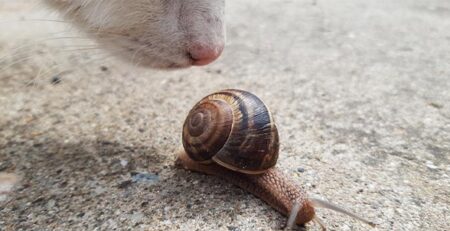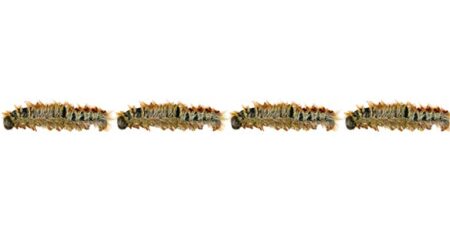Cat mange is a skin disease caused by mites that can affect cats but can also infect other species of animals.
Most mites are transmitted by direct contact between two cats.
The mites responsible for mange naturally live on the outer surface of the cat’s body and usually do not cause problems.
However, when the cat’s immune system is weakened for any reason, mites can multiply and cause discomfort to the animal.
There are different types of mange but what they have in common is the intense itching that the animal experiences due to the activity of the mites on its skin.
From what can we tell that our cat has mange
Most mites cause intense itching in cats .
Because the animal scratches a lot, scabs and swellings may form on the surface of its skin; hair loss in affected areas is another obvious consequence of mange.
It is important to monitor the condition of the cat’s skin as it may develop a bacterial infection.
And again, a cat stricken with mange will generally show impatience, restlessness and tend to shake and tilt its head.
The different types of mange in cats
Feline mange mites can attack the skin or attack the ears.
Here are the different types of mange that caninfect your cat.
- Notohedral Rogna
Notoedric mange is caused by Notoedres cati. It causes intense itching and skin lesions that usually end near the ears and then spread to the head and neck.
Typically, a cat suffering from notohedral mange presents with a head covered with scabs.
- Demodectic Rogna
The Demodectic mange mite (Demodex cati) most frequently affects dogs but cats are not immune.

Puppies mainly suffer from it especially when they are malnourished or sick and their immune systems are unable to counteract the proliferation of mites.
Hair loss and scabs occur on the head and neck.
- Rogna Otodectica, the most common
Otodectic mange mites(Otodectes cynotis) breed in the external ear canal of cats, causing inflammation, the most obvious symptom of which is the formation of dark earwax.
In this case, it is important to act quickly because if ear mange is neglected for a long time, it can cause otitis, hemorrhaging and bleeding to the point of perforating the cat’s eardrum.
Whatever form of mange your cat suffers from, it must be treated because it is very contagious, mainly to his feline companions and even dogs.
How to treat cat mange?
The solution for mange in cats is pharmacological in nature, which is why it is always best to Consult your veterinarian of choice.
Your veterinarian will first perform diagnostic tests to determine if your cat’s symptoms are indeed caused by mites and which ones, specifically.
Next, your veterinarian will tell you the specific antiparasitic treatment to eradicate the pesky mites that bother your cat and the useful products to strengthen your cat’s immune system.
Precautions to avoid infection to other animals in the house
Because infection occurs through contact, it is important to sanitize the home as much as possible and quarantine the affected feline.
To reduce the risk of contamination, kennels and bowls should be disinfected.
Can cat mange infect humans?
The specific strain of mites affecting humans(Sarcoptes Scabiei Hominis) is different from that common in pets, but if you have a cat with mange, there is a possibility of contagion.
Transmission via linens or bedding turns out to be a remote but not unlikely eventuality.
Passage can only occur through direct contact, that is, by touching the cat’s skin with bare hands.
So just avoid touching the infected area to avoid infection or do so using disposable gloves.
If you suspect your cat is suffering from feline mange, contact us immediately for a consultation.
Our Staff Veterinarians are available to give your cat a complete examination and to assess its health status.
We would also like to remind you that Clinica La Veterinaria is always open h 24 every day including holidays and with First Aid service from 8 pm to 8 am.











